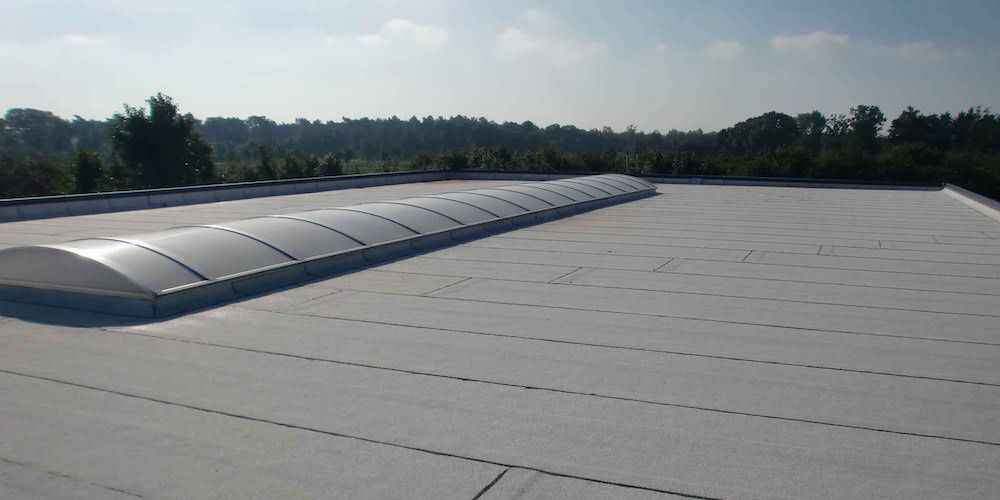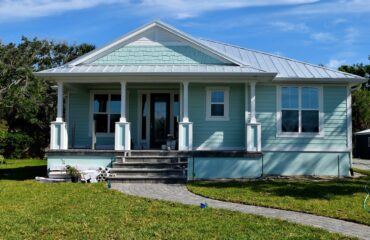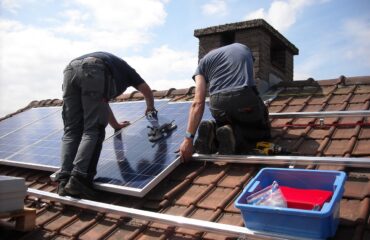Built-up roofing, or BUR, is a robust roofing system composed of layers of bitumen and reinforcing fabrics like fiberglass or polyester. These layers are applied hot or cold onto the roof substrate and are often finished with gravel or mineral cap sheets to boost protection. BUR provides longevity, durability, excellent waterproofing, and fire resistance. Widely used in commercial and industrial settings, particularly on flat or low-sloped roofs, BUR is ideal for buildings with rooftop equipment. Regular maintenance, including inspections and cleaning, is essential for peak performance. Learn about the many benefits and applications of built-up roofing from the Austin Roof Repair Experts.
Composition of Built-Up Roofing
Comprising multiple layers of bitumen and reinforcing fabrics, the composition of built-up roofing is designed to provide a durable and weather-resistant surface for commercial and industrial structures. Typically, built-up roofing systems consist of alternating layers of bitumen, a sticky, black, and viscous form of petroleum, and reinforcing fabrics such as fiberglass or polyester. These layers are applied hot or cold onto the roof substrate, with gravel or a mineral cap sheet often added for further protection against UV rays and mechanical damage.
The bitumen is the waterproofing agent, effectively sealing the roof against water infiltration. The reinforcing fabrics, embedded within the bitumen layers, provide strength and stability to the roofing system. This combination creates a robust membrane that can withstand weather conditions, including heavy rain, snow, and wind. Moreover, the multiple layers of bitumen and reinforcing fabrics contribute to the built-up roofing system’s longevity, making it a popular choice for flat or low-sloped roofs in commercial and industrial settings.
Benefits of Built-Up Roofing
Built-up roofing systems enhance durability and weather resistance and offer a robust solution for protecting commercial and industrial structures. One of the critical benefits of built-up roofing is its longevity. The multiple layers of bitumen and supporting fabrics create a strong and resilient membrane that can withstand harsh weather conditions, including heavy rain, snow, and UV exposure. This durability helps extend the roof’s lifespan, reducing the need for frequent repairs or replacements.
Additionally, built-up roofing provides excellent waterproofing properties. The layers of bitumen are fused to create a seamless barrier that effectively prevents water infiltration, protecting the building from leaks and water damage. This waterproofing capability is essential for maintaining the structural virtue of the roof and the entire building.
Moreover, built-up roofing systems offer good fire resistance due to the materials used in their construction. The multiple layers of bitumen and gravel provide a fire-retardant surface that can help prevent the spread of flames in the event of a fire, enhancing the overall safety of the structure.
Applications of Built-Up Roofing
Built-up roofing systems are commonly utilized in various commercial and industrial settings for their proven ability to provide durable and long-lasting protection against environmental elements. These systems are particularly well-suited for flat or low-sloped roofs because they create a seamless, watertight barrier. Industries such as manufacturing facilities, warehouses, and distribution centers often opt for built-up roofing due to its ability to withstand heavy foot traffic and equipment loads.
Additionally, built-up roofing is frequently chosen for buildings that require rooftop equipment installations, such as HVAC units or solar panels, as the multiple layers in the system provide added protection against potential damage. The versatility of built-up roofing also makes it a popular choice for buildings in extreme weather conditions, as it can effectively resist damage from UV exposure, strong winds, and temperature fluctuations. Overall, the built-up roofing applications extend across various industries, offering reliable protection and longevity for commercial and industrial structures.
Maintenance of Built-Up Roofing
Regular maintenance of built-up roofing systems is essential to guarantee their longevity and peak performance in commercial and industrial settings. Regular inspections are necessary to promptly identify and address any issues to maintain a built-up roof. Inspections should be conducted at least twice yearly, with additional checks after severe weather events. During these inspections, it is essential to look for signs of wear and tear, such as cracks, blistering, or loose seams. Any debris should be cleared from the roof surface, as it can trap moisture and accelerate deterioration.
In addition to inspections, routine cleaning is crucial to prevent the buildup of dirt, algae, or other contaminants that can damage the roofing materials over time. Proper drainage should be ensured to avoid water ponding, which can weaken the roof structure. Any necessary repairs, such as patching up damaged areas or resealing seams, should be carried out promptly to prevent further damage. Following a proactive maintenance schedule, built-up roofing systems can remain durable and reliable for many years.
Other Roofing Tips:





